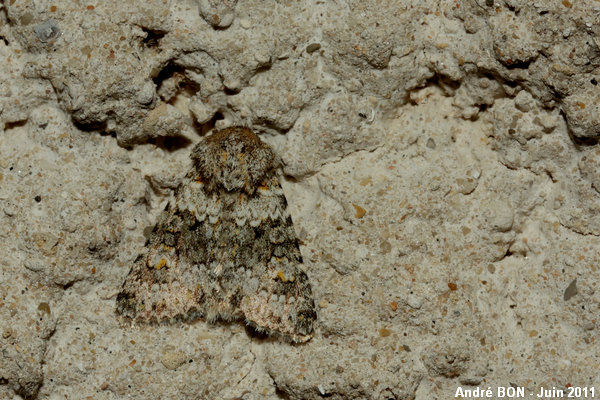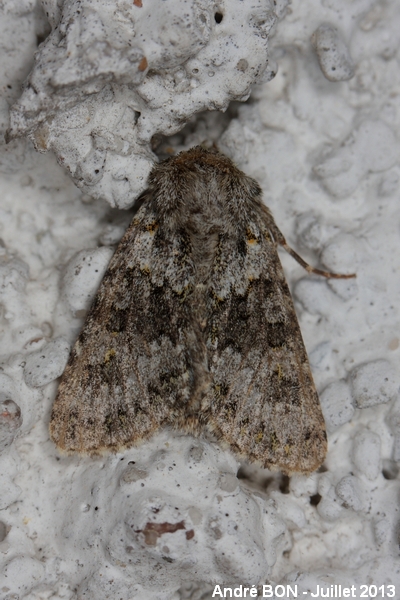

| Small Ranunculus (Hecatera dysodea (Denis & Schiffermüller, 1775)) |


|
|
Scientific name: Hecatera dysodea (Denis & Schiffermüller, 1775) Common name: Small Ranunculus French name: Noctuelle dysodée, Noctuelle des renoncules. Order: Lepidoptera Suborder: Heterocera Family: Noctuidae Subfamily: Hadeninae Wingspan: 32-34 mm. Biotope: Road sides, cultivated areas. Geographic area: Southern and central Europe, central Asia east to western Mongolia. North Africa. Recently introduced to the United States of America. Flight time: May to mid-August. Number of generations : 1 Caterpillar: Green reddish brown or green. The spiracles which appear as small black dots mark the limit between a dark dorsal area and a much more paler underside area. Host plant: Various species of wild or cultivated Lettuces (Lactuca spp.). The caterpillars feed on seeds or flowers. |
The Small Ranunculus' wings show a dark grey median area between two paler areas mottled with orange. These areas appear separated by festooned lines. There is a prominent tuft of hairs above and back of the head. The Small Ranunculus is attracted to light. It over winters as a chrysalis under the ground. |
| [To know more about the Small Ranunculus] [Next picture] [Top] |

|
The colours of the Small Ranunculus provide a good camouflage on the wall of the house. |
| [To know more about the Small Ranunculus] [Previous picture] [Top] |

|
Here is a new observation of one Small Ranunculus, at the same place as before, just two years and one week later. This moth is following the paths of its grand parents. |